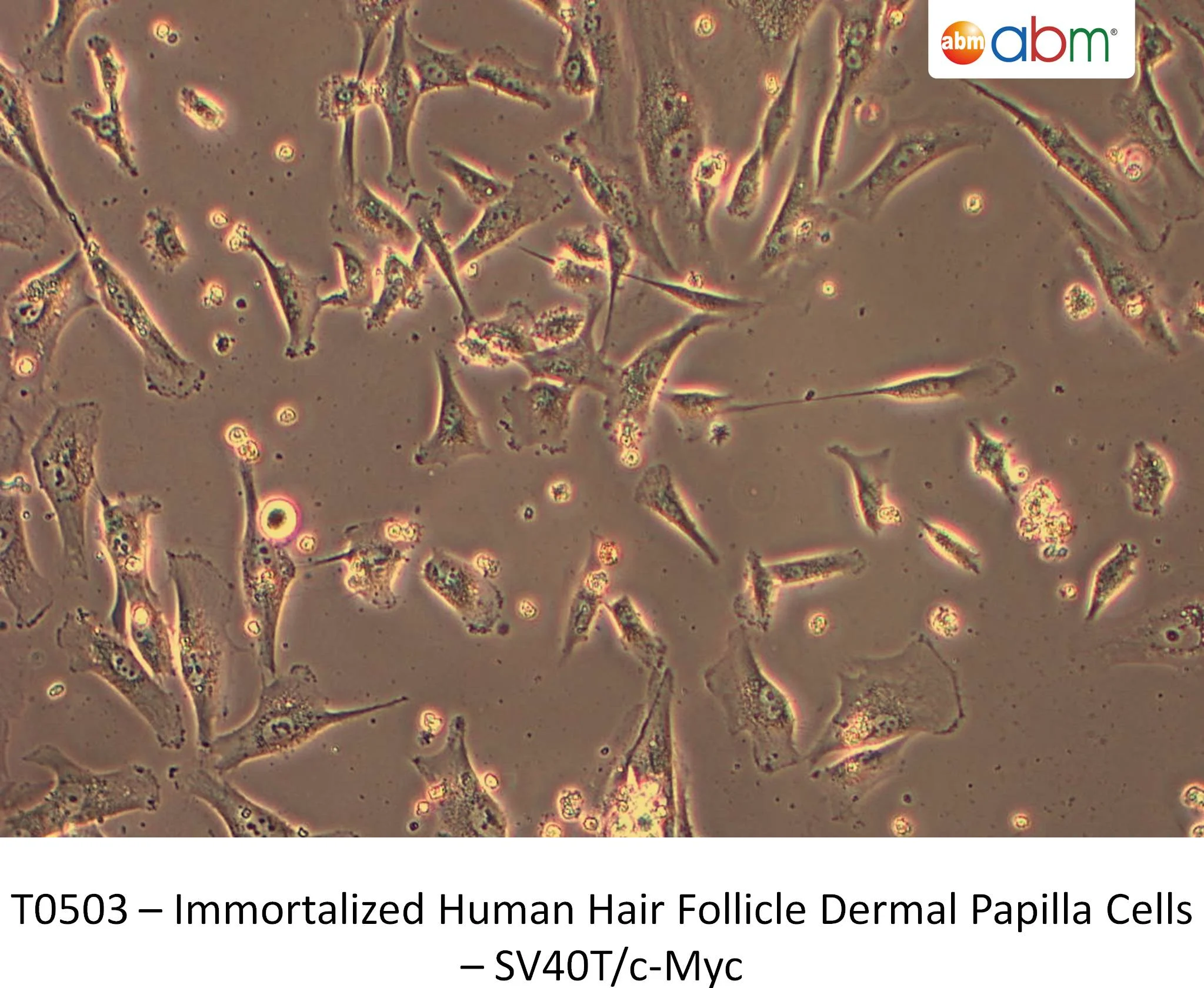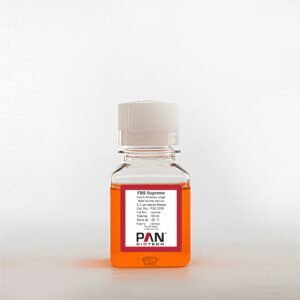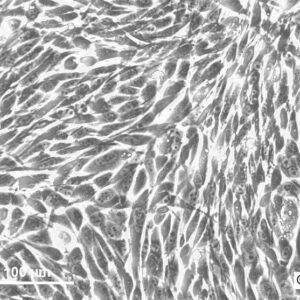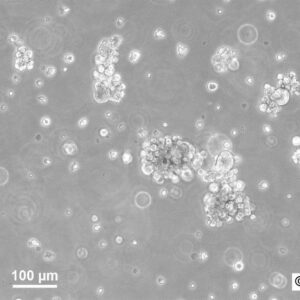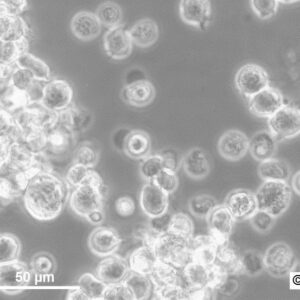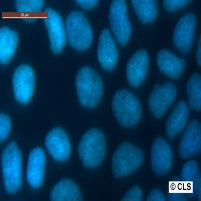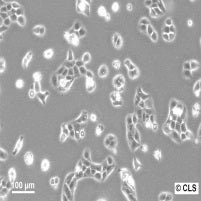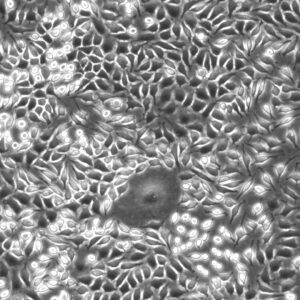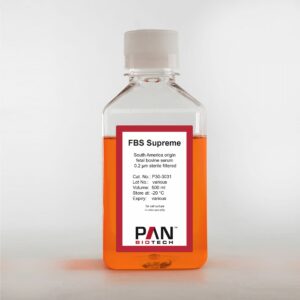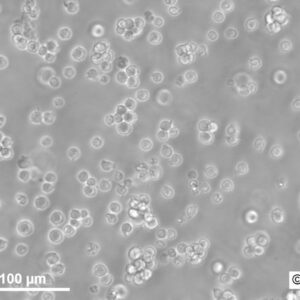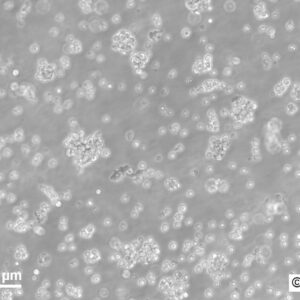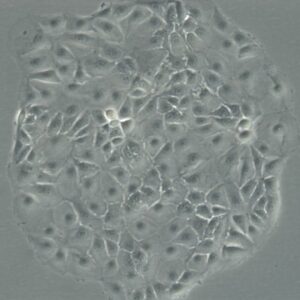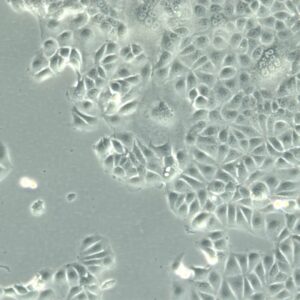Human Hair Follicle Dermal Papilla cells are highly active mesenchymal cells isolated from the hair papilla embedded in extracellular matrix of scalp hair follicles. Dermal Papilla Cells play a significant role in controlling the hair growth cycle and production by involving in the epithelial-mesenchymal interaction of hair follicle cells.
The Immortalized Human Dermal Papilla Cells (DPCs) express DPC specific markers smooth muscle alpha actin and alkaline phosphatase and retain the ability to secrete growth factors such as VEGF, PIGF, bFGF, IGFBP-6 and GM-CSF. DCP-conditioned media have also been shown to increase proliferation of HaCaT cells in vitro and to accelerate hair growth in mice models. A list of up-regulated genes in the DPC can be found in the supporting document section below. The DPC serves as a useful tool for the study of hair growth regulation.
| Organism | Human (H. sapiens) |
| Tissue | Hair Follicle |
| Donor History | Not disclosed |
| Growth Properties | Adherent, flat polygonal |
| Cell Type | Immortalized Cells |
| Storage Condition | Vapor phase of liquid nitrogen, or below -130°C. |
| Shipping Conditions | Ship with dry ice. |
| Product Format | Frozen |
| Intended Use | This product is intended for laboratory research use only. It is not intended for any animal or human therapeutic use, any human or animal consumption, or any diagnostic use. |
| BioSafety | II |
| Certificate of Analysis | For batch-specific test results, refer to the applicable certificate of analysis that can be found at www.abmgood.com. |
| Growth Conditions | Use of PriCoat™ T25 Flasks (G299) or Applied Cell Extracellular Matrix (G422) is required for cell adhesion to the culture vessels. PriGrow III (TM003) + 10% FBS + 1% Penicillin/Streptomycin Solution (G255), 37.0°C, 5% CO₂ |
| Unpacking and Storage Instructions | 1. Visually examine the packaging containers for signs of leakage or breakage.
2. Immediately transfer frozen cells from dry ice packaging to a temperature below -130°C, preferably in liquid nitrogen vapor phase storage, until ready for use. To ensure the highest level of viability, thaw the vial and initiate culture as soon as possible upon receipt. If continued storage is desired, the vial should only be stored below -130°C or in liquid nitrogen vapor phase. Do not store at -70°C, as it will result in loss of viability. |
| Thawing Protocol | 1. Thaw cells quickly in a 37°C water bath while agitating gently (maximum 2 minutes). The vial cap should be kept above the water level to minimize the risk of contamination.
2. Decontaminate the vial by spraying and wiping the exterior of the vial with 70% ethanol. From this point onwards, all operations should be strictly carried out inside a biological safety cabinet using aseptic conditions. 3. Transfer the cell suspension into a 15ml sterile conical tube containing 5ml of pre-warmed, complete growth media. Centrifuge cells at 125xg for 5-7 minutes. 4. Aspirate the supernatant without disturbing the cell pellet. Re-suspend the cell pellet in the recommended pre-warmed, complete growth media and dispense into a T25 culture flask. 5. Incubate the cells at the recommended conditions. |
| Subculture Protocol | Volumes given below are for a T75 flask; proportionally increase or decrease the volume as required per culture vessel size. Subculture cells once the culture vessel is 80% confluent.
1. Aspirate the culture media, and add 2-3ml of pre-warmed 0.25% Trypsin-EDTA to the culture vessel. 2. Observe the cells under a microscope to confirm detachment (typically within 2-10 minutes). Cells that are difficult to detach can be put in 37°C, for several minutes to facilitate detachment. 3. Neutralize Trypsin-EDTA by adding an equal volume of the complete growth media into the culture vessel. 4. Transfer the culture suspension into a sterile centrifuge tube, and centrifuge at 125xg for 5 minutes. The actual centrifuge duration and speed may vary depending on the cell type. 5. Aspirate the supernatant, and re-suspend the pellet with pre-warmed fresh complete growth media. Add appropriate aliquots of the cell suspension to new culture vessels, as desired. 6. Incubate the cells at the recommended conditions. |
| Cryopreservation | Cryopreservation Medium (TM024), or complete growth media with 10% DMSO. |
| Seeding Density (cells/cm2) | 20,000 – 30,000 |
| Split Ratio | 1:2 |
| Immortalization Method | Serial passaging and transduction with recombinant lentiviruses carrying SV40 Large T antigen and c-Myc gene |
| Expression | DPC specific markers (smooth muscle alpha actin and alkaline phosphatase) |
| STR Profiling | D5S818 : 10,12
D13S317 : 8,11 D7S820 : 8,8 D16S539 : 12,13 VWA : 16,16 TH01 : 6,9 AMEL : X,Y TPOX : 8,8 CSF1PO : 10,12 D12S391 : 20,20 FGA : 24,25 D2S1338 : 23,25 D21S11 : 28,33.2 D18S51 : 17,19 D8S1179 : 15,17 D3S1358 : 15,15 D6S1043 : 11,18 PENTAE : 10,15 D19S433 : 13,14 PENTAD : 8,12 D1S1656 : 13,18 |
| Material Citation | If use of this material results in a scientific publication, please cite the material in the following manner: Applied Biological Materials Inc, Cat. No. T0503. |
| Warranty | abm warrants that cell lines shall be viable upon initiation of culture for a period of thirty (30) days after shipment and that they shall meet the specifications on the applicable abm Material Product Information sheet, certificate of analysis, and/or catalog description. Such thirty (30) day period is referred to herein as the “Warranty Period”. |
| Disclaimer |
1. All test parameters provided in the CoA are conducted using abm‘s standardized culture system and The stated values may vary under the end-user’s culture conditions. Please verify that the product is suitable for your studies by referencing published papers or ordering RNA (0.5 μg, Cat.# C207, $450.00) or cell lysate (100 μg, Cat.# C206, $600.00) to perform preliminary experiments, or alternatively use our Gene Expression Assay Service (Cat# C138). All sales are final.
2. We recommend live cell shipments for ease of cell transfer and this option can be requested at the time of order placement. Please note that the end-user will need to evaluate the feasibility of live cell shipment by taking into account the final destination’s temperature variation and its geographical location.
3. All of abm‘s cell biology products are for research use ONLY and NOT for therapeutic/diagnostic applications. abm is not liable for any repercussions arising from the use of its cell biology product(s) in therapeutic/diagnostic or any other non-RUO application(s).
4. abm makes no warranties or representations as to the accuracy of the information on this site. Citations from literature are provided for informational purposes only. abm does not warrant that such information has been shown to be accurate.
5. abm warrants that cell lines shall be viable upon initiation of culture for a period of thirty (30) days after shipment and that they shall meet the specifications on the applicable abm Material Product Information sheet, certificate of analysis, and/or catalog description. Such thirty (30) day period is referred to herein as the “Warranty Period”.
|
| Depositor | University of Seoul |
| Application | Research Use Only. |
| Material Citation | If use of this material results in a scientific publication, please cite the material in the following manner: Applied Biological Materials Inc, Cat. No. T0503 |
| Vendor | Applied Biological Materials, INC |
|---|
Related products
การเพาะเลี้ยงเนื้อเยื่อ
เซลล์ไลน์
การเพาะเลี้ยงเนื้อเยื่อ
การเพาะเลี้ยงเนื้อเยื่อ
การเพาะเลี้ยงเนื้อเยื่อ
การเพาะเลี้ยงเนื้อเยื่อ
FBS Supreme, South America origin, fetal bovine serum, 0.2 µm sterile filtered
การเพาะเลี้ยงเนื้อเยื่อ
การเพาะเลี้ยงเนื้อเยื่อ


